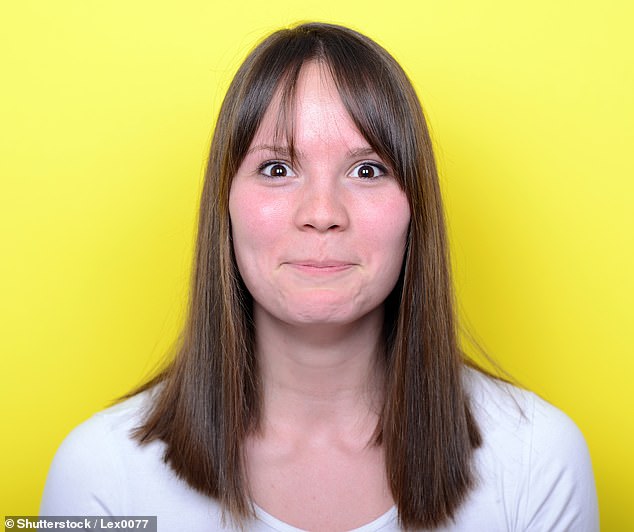Let it glow! Blushing is an instinctive response to your own karaoke, scientists prove after forcing teenage girls to watch videos of themselves singing back
- Teenage girls sang four songs during a karaoke session, which was filmed
- When they watched it back, they blushed more at their own videos than at others’
It’s not that hard to embarrass a teenager.
But a new study may have helped them reach a new level of humiliation, by making them sing karaoke and then watch the videos back.
As part of the research into the origins of blushing, 40 young people between the ages of 16 and 20 participated in a karaoke session for the first time.
The participants sang four songs: ‘Hello’ by Adele, ‘Let it go’ from Frozen, ‘All I want for Christmas is you’ by Mariah Carey and ‘All the things she said’ by tATu.
These songs were chosen because several music experts found that these songs were very difficult to sing, which would make participants feel embarrassed when they saw themselves singing these songs.
It’s not that hard to embarrass a teenager. But a new study may have helped them reach new levels of humiliation – because they had to sing karaoke and then watch the videos back (stock image)
While they were shown videos of themselves and others singing, their cheek temperatures – an indicator of blushing – and their brain activity were measured.
The results showed that the participants blushed more when they saw themselves singing.
Furthermore, brain activity suggested that this was linked to greater self-awareness, rather than worrying about what others thought of them.
Writing in the journal Proceedings of the Royal Association B The University of Amsterdam team said: ‘Darwin suggested that blushing – the reddening of the face as a result of heightened self-consciousness – is “the most human of all expressions”.
Yet, relatively little is known about the underlying mechanisms of blushing.
‘The results showed that people blush more often when they see themselves singing than when others do.
“These results are consistent with recent proposals suggesting that blushing may be caused by a sudden surge of alertness upon social exposure.”
The study was conducted shortly after research suggested that facial flushing may not be a uniquely human trait.

The results showed that blushing was stronger when participants saw themselves singing (stock image)
But according to French scientists, chickens also turn red during ‘negative situations of high arousal’.
In the study, chickens were either given a delicious mealworm treat or were captured by one of the researchers while cameras filmed their faces.
It was found that the chickens turned a little red when they were happy.
However, the scientists found that they saw the most color when they were excited or agitated.
Chickens have many blood vessels just under the skin of their face. When the blood flow increases, the skin turns bright red.
